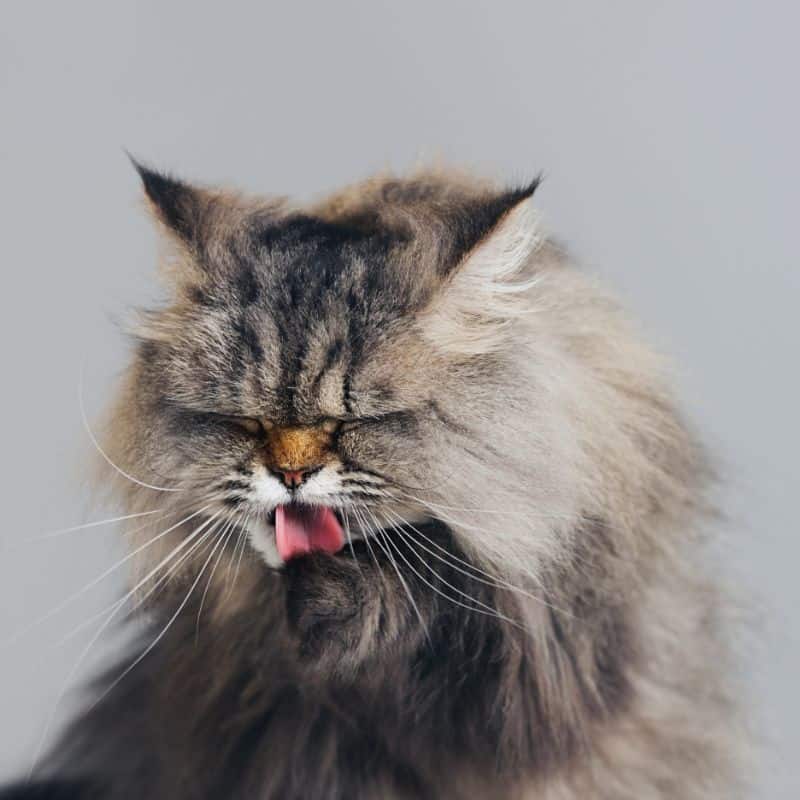Are Hairballs in Cats Normal?

Did you know that birds of prey actually regurgitate parts of previous meals that they can’t properly digest? These pellets, or castings, are formed 6-10 hours after a meal in the gizzard. Dissected pellets may reveal bones, fur, feathers, claws, teeth, bills, insect exoskeletons, and even plant matter.
Perhaps not surprisingly, cat hairballs serve a similar purpose. Sure, they can be unsettling to watch come up, and gross to step on with bare feet, but cat hairballs are a common feline behavior.
It’s Okay, Until It’s Not
It may sound odd to say that regular vomiting is normal or healthy, but this reflex definitely can be in cats. They may seem to have a certain preference for the worst possible place to deposit a hairball (like your favorite pair of shoes), but it’s (probably) not intentional.
Anatomy of a Tongue
You’ve likely noticed that your cat’s tongue is rough, not unlike sandpaper. The hook-like structures on the tongue grab onto loose or dead hair on the coat while grooming. During these self-grooming sessions, all this hair is swallowed. Most of it passes through the digestive tract without incident. Some hair, however, may remain in the stomach.
The Shape of Things
Cat hairballs are typically narrow and long. When a feline feels the need to rid the stomach of all that excess hair, the contents have to wind their way through the narrow passage of the esophagus and out of the mouth.
Keeping Score
Obviously, long-haired cats like Persians or Maine Coons are predisposed to frequent hairballs. Likewise, older cats are more likely to experience the process than younger ones. This is explained by their highly developed skills as self-groomers. Adults and seniors have spent their lives fine-tuning their abilities. The result? More hairballs for you to clean up as they age!
Sometimes, cats develop a habit of grooming that goes over the line. If you see your cat obsessively or excessively grooming themselves, please let us know.
When Hairballs Mean Business
If a cat produces hairballs on a regular basis, but everything else is normal, they could simply need a little extra support in some key departments.
Feline dietary needs are highly specific. Sometimes, the frequency of hairballs can be reduced by simply adding some bulk to their diet. Fiber can have a significant impact on how the body processes swallowed hair. Try adding a bit of unsweetened, pureed pumpkin to their food. Likewise, there are commercial canned and dry foods designed to minimize hairballs.
Helping your cat with hair maintenance is equally important. Brush their coat a few times every week to reduce how much loose hair they can potentially ingest on their own.
When It’s Time to Seek Help
Despite dietary recommendations or recommended treatment, if your cat continues to produce hairballs, various health conditions should be ruled out. A physical exam, fecal exam, urinalysis, and blood work can help us get to the bottom of their symptoms.
If you notice that your cat has difficulty expelling hairballs, has a diminishing appetite, acts lethargic, and has vomiting or diarrhea, it’s time to seek help.
Beverly Hills Veterinary Associates
If you have additional questions or concerns about cat hairballs or general feline health, please let our veterinarians and staff members know. We are always here for you at Beverly Hills Veterinary Associates!
